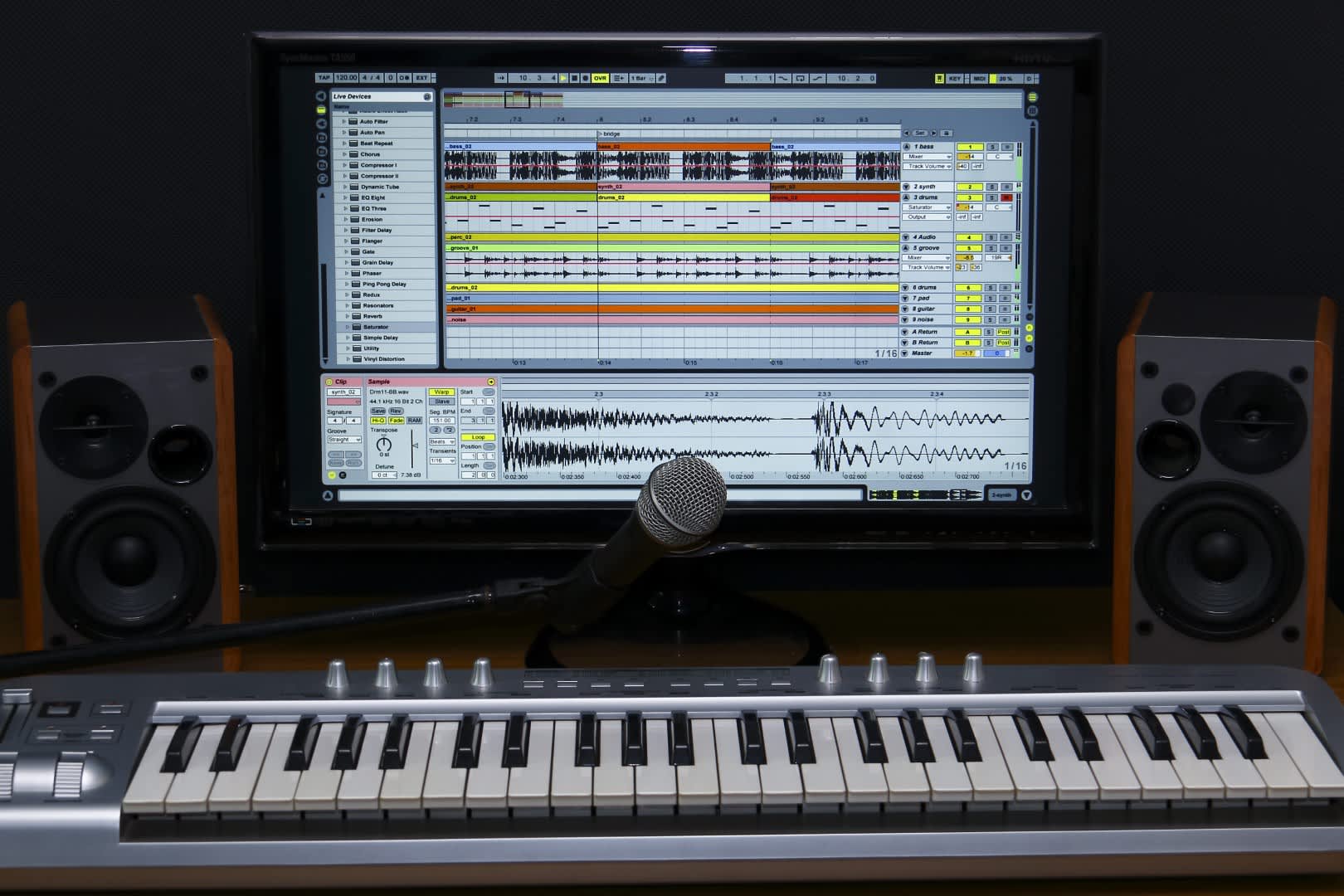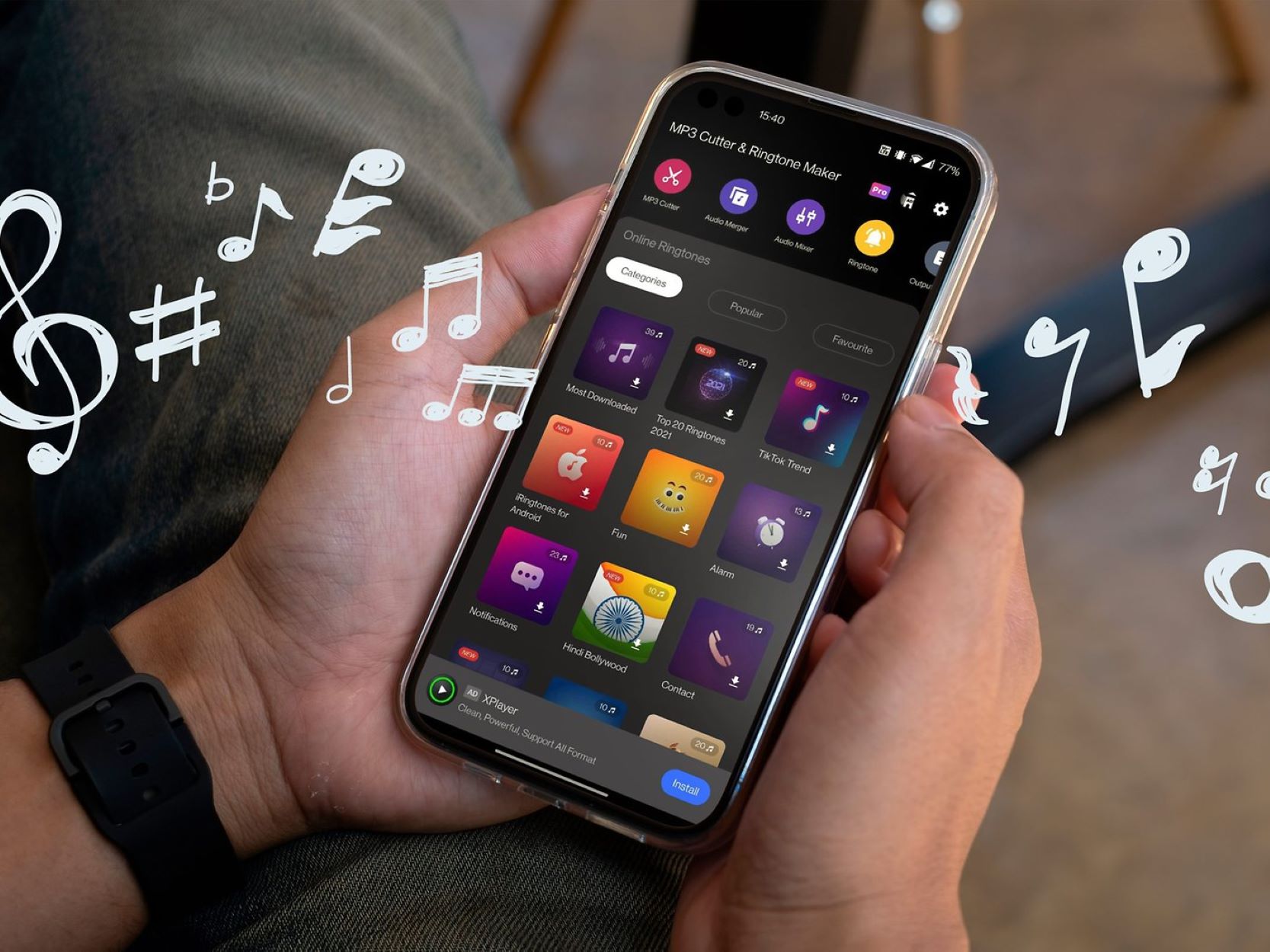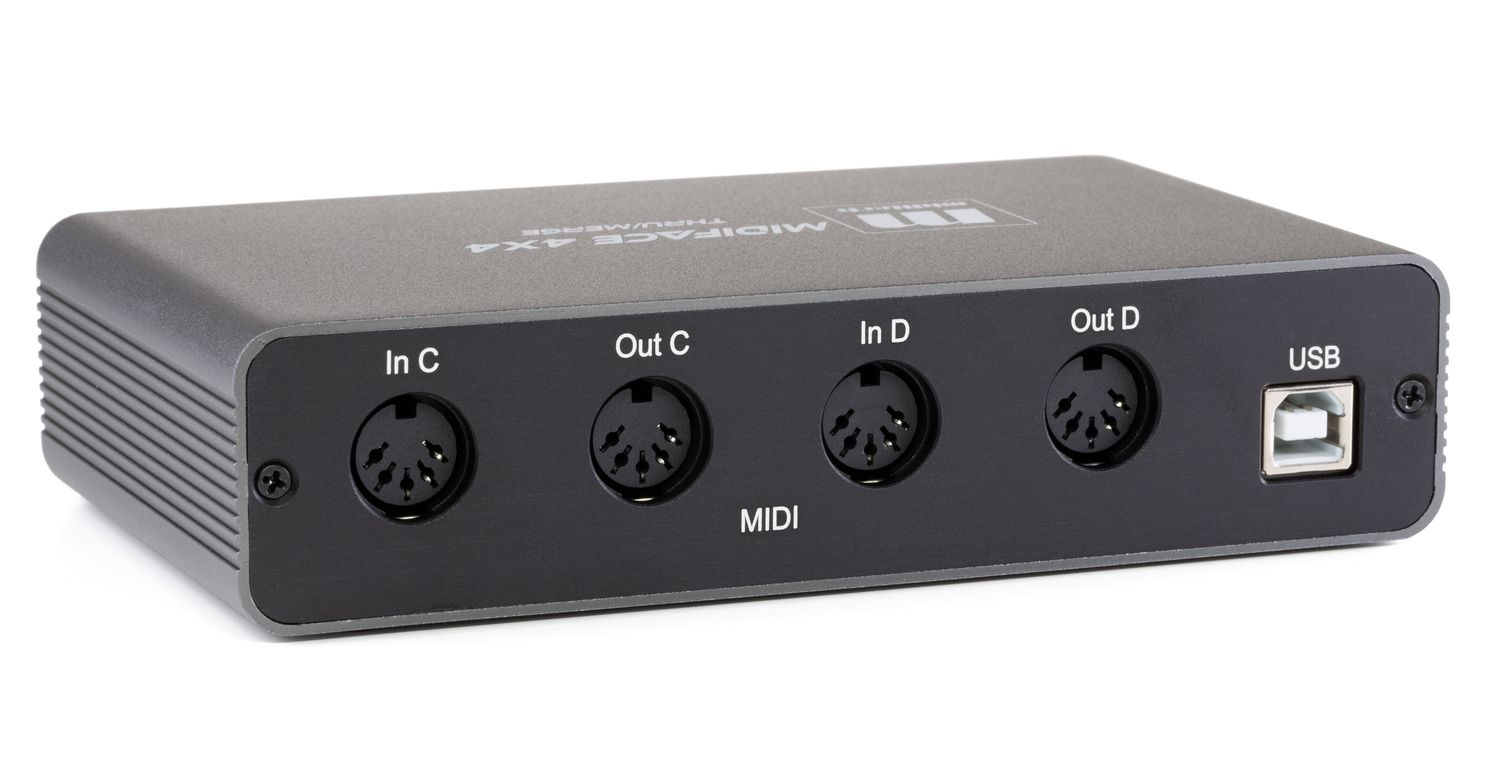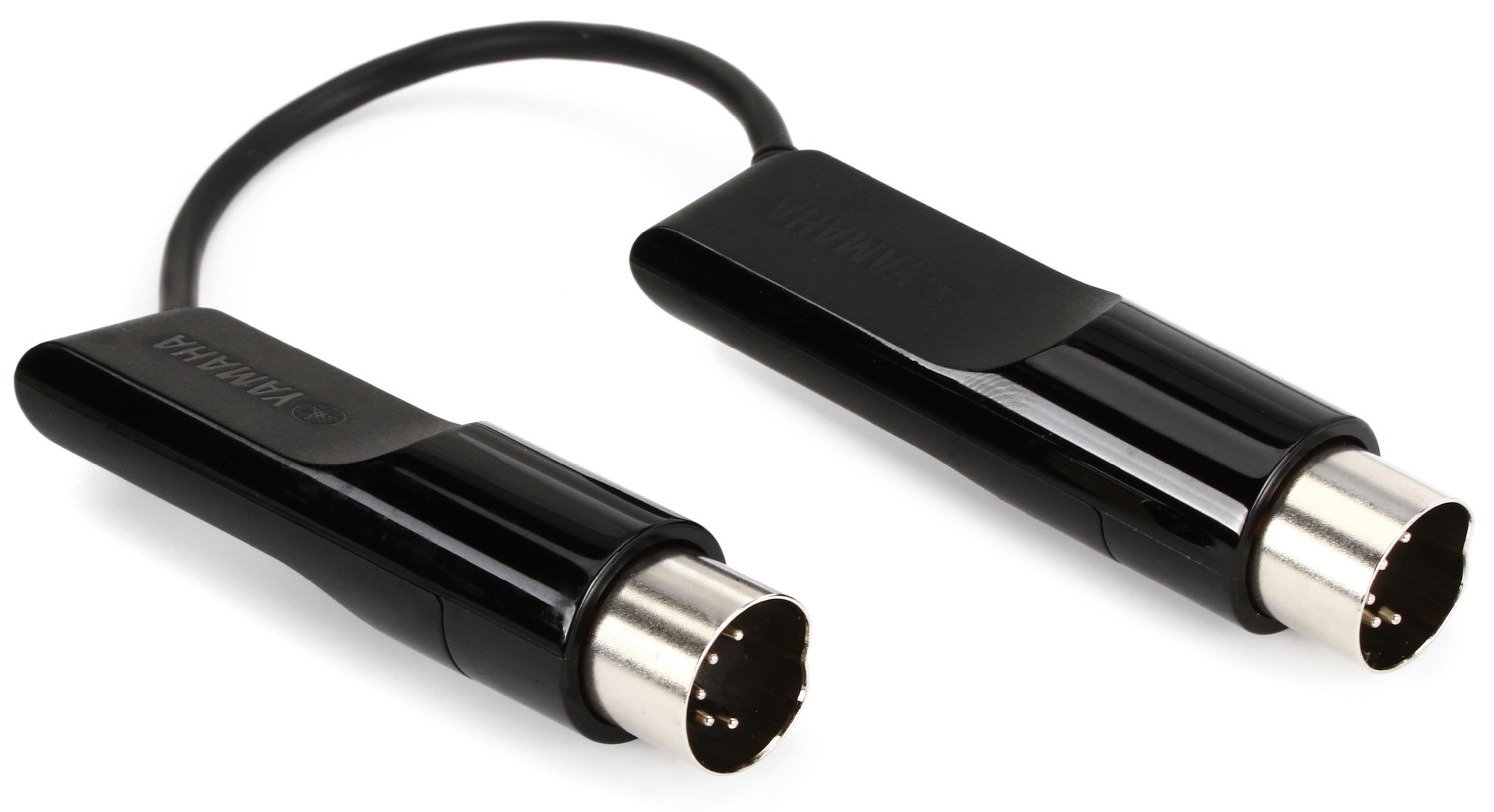Home>Production & Technology>MIDI>What Is A MIDI Ringtone


MIDI
What Is A MIDI Ringtone
Modified: February 22, 2024
Discover the benefits of MIDI ringtones and how they enhance your mobile experience. Learn how to create and use MIDI ringtones for a personalized touch to your phone.
(Many of the links in this article redirect to a specific reviewed product. Your purchase of these products through affiliate links helps to generate commission for AudioLover.com, at no extra cost. Learn more)
Table of Contents
Introduction
In the realm of mobile devices, ringtones have long been a means of personalizing one's phone and adding a touch of individuality to the everyday humdrum of incoming calls and messages. From the early days of monophonic ringtones to the more advanced polyphonic and MP3-based options, the evolution of ringtones has been nothing short of fascinating. However, nestled within this evolution lies a timeless classic – the MIDI ringtone.
MIDI, short for Musical Instrument Digital Interface, has been an integral part of electronic music since its inception in the 1980s. Its compact file size and versatility have made it a popular choice for creating ringtones that can be used across a wide range of mobile devices. Despite the emergence of more advanced audio formats, MIDI ringtones continue to hold their own, offering a unique charm that resonates with many users.
In this article, we will delve into the world of MIDI ringtones, exploring what they are, how they work, and the advantages and disadvantages they bring to the table. Whether you're a seasoned MIDI enthusiast or someone new to the concept, this exploration will shed light on the enduring appeal of MIDI ringtones and their relevance in today's mobile landscape. So, let's embark on this melodic journey and uncover the intricacies of MIDI ringtones together.
What is MIDI?
MIDI, an acronym for Musical Instrument Digital Interface, is a technical standard that revolutionized the world of music by enabling electronic instruments, computers, and other devices to communicate and synchronize with each other. Developed in the early 1980s, MIDI was a groundbreaking innovation that standardized the way musical equipment communicated, allowing for seamless integration and control across a wide array of devices.
At its core, MIDI does not transmit audio signals; instead, it transmits information about music, such as note values, pitch, velocity, vibrato, panning, and more. This data is transmitted in a digital format, making MIDI files significantly smaller in size compared to audio recordings. It's important to note that MIDI is not a sound file format, but rather a set of instructions that tell a MIDI-enabled device how to produce sound.
One of the key features that sets MIDI apart is its versatility. It can be used to control a diverse range of electronic musical instruments, such as synthesizers, drum machines, and samplers, as well as computer software and hardware. This flexibility has made MIDI a cornerstone of electronic music production, enabling musicians and producers to create, edit, and playback musical performances with precision and efficiency.
MIDI's influence extends beyond music production, finding applications in various industries, including gaming, theater, and lighting control. Its ability to transmit synchronized data in real-time has made it an indispensable tool for creating immersive experiences across different mediums.
Furthermore, MIDI has evolved over the years, with advancements such as General MIDI (GM) and Extended General MIDI (XG) expanding its capabilities and compatibility. These developments have contributed to MIDI's enduring relevance in the digital age, ensuring that it remains a fundamental component of modern music technology.
In essence, MIDI serves as a universal language for musical devices, facilitating seamless communication and control. Its impact on music creation, performance, and integration across different platforms is undeniable, making it a cornerstone of the digital music landscape. As we continue our exploration of MIDI ringtones, understanding the foundational principles of MIDI will provide valuable insight into the intricacies of this timeless technology.
What is a MIDI Ringtone?
A MIDI ringtone is a musical ringtone format that utilizes the Musical Instrument Digital Interface (MIDI) technology to produce musical sounds on mobile devices. Unlike traditional audio-based ringtones, MIDI ringtones are synthesized using instructions and musical data encoded in MIDI format. This compact and efficient format allows for the creation of melodic tunes that consume minimal storage space, making them ideal for early mobile phones with limited memory capacity.
MIDI ringtones are created by programming musical notes, tempo, instrument sounds, and other musical parameters into a MIDI sequence. These sequences are then saved as MIDI files, which can be easily transferred and loaded onto a mobile device. When an incoming call or message triggers the ringtone, the device interprets the MIDI data and generates the corresponding musical sounds using its built-in synthesizer or sound module.
One of the defining characteristics of MIDI ringtones is their ability to produce polyphonic sounds, allowing for the playback of multiple notes simultaneously. This polyphonic capability enables MIDI ringtones to emulate the richness and complexity of musical compositions, creating a more dynamic and expressive auditory experience compared to monophonic ringtones.
MIDI ringtones offer a wide range of musical possibilities, including recreations of popular songs, classical compositions, and original melodies. Their versatility and adaptability have made them a popular choice for personalizing mobile devices, allowing users to set custom MIDI ringtones that reflect their musical preferences and individuality.
Despite the advancements in audio technology and the availability of high-fidelity audio formats, MIDI ringtones continue to hold a special place in the realm of mobile customization. Their nostalgic charm, efficient file size, and compatibility with a broad spectrum of mobile devices have contributed to their enduring popularity.
As we delve deeper into the world of MIDI ringtones, it becomes evident that these compact musical snippets encapsulate a timeless appeal that transcends technological advancements, resonating with users who appreciate the artistry and simplicity of MIDI-based melodies.
How to Use MIDI Ringtones
Using MIDI ringtones to personalize your mobile device is a straightforward and enjoyable process that allows you to infuse your phone with a touch of musical flair. Whether you're keen on setting a classic tune, a snippet of your favorite song, or a custom-created melody as your ringtone, MIDI ringtones offer a versatile and engaging way to enhance your mobile experience.
-
Selecting a MIDI Ringtone: The first step in using MIDI ringtones involves selecting or creating the MIDI file that will serve as your ringtone. There are numerous sources for MIDI ringtones, including online repositories, music creation software, and MIDI file libraries. You can explore a wide range of genres and musical styles to find a MIDI ringtone that resonates with your preferences.
-
Transferring the MIDI File: Once you've chosen or created a MIDI ringtone, the next step is to transfer the MIDI file to your mobile device. This can be accomplished through various methods, such as connecting your phone to a computer and transferring the file via USB, using cloud storage services, or downloading the MIDI file directly onto your device. Most modern smartphones support the direct installation of MIDI files as ringtones.
-
Setting the MIDI Ringtone: After the MIDI file is on your mobile device, you can proceed to set it as your ringtone. The process for setting a MIDI ringtone may vary depending on your device's operating system, but it typically involves accessing the sound settings or ringtone selection menu and choosing the option to set a custom ringtone. Once selected, the MIDI ringtone will be assigned as the default tone for incoming calls, messages, or specific contacts, depending on your preferences.
-
Enjoying the Musical Melodies: With the MIDI ringtone successfully set, you can now enjoy the personalized musical melodies that accompany incoming calls and messages. Whether it's a snippet of a timeless classic, a lively instrumental piece, or a melody of your own creation, the MIDI ringtone adds a touch of individuality and musical charm to your mobile communication experience.
By following these simple steps, you can seamlessly integrate MIDI ringtones into your mobile device, allowing you to express your musical tastes and preferences through personalized auditory notifications. The versatility and ease of use associated with MIDI ringtones make them an appealing choice for individuals seeking a creative and customizable approach to mobile customization.
Advantages of MIDI Ringtones
MIDI ringtones offer a host of advantages that contribute to their enduring appeal and relevance in the realm of mobile customization. These advantages encompass factors such as efficiency, versatility, and user experience, making MIDI ringtones a compelling choice for individuals seeking personalized and melodious auditory notifications.
1. Efficient File Size
One of the primary advantages of MIDI ringtones is their remarkably efficient file size. Unlike audio-based ringtones that rely on uncompressed audio data, MIDI ringtones are composed of compact sets of musical instructions and data. This efficiency allows MIDI ringtones to occupy minimal storage space on mobile devices, making them ideal for phones with limited memory capacity. Additionally, the modest file size of MIDI ringtones facilitates swift downloads and seamless sharing, ensuring that users can easily acquire and utilize a diverse range of musical tones without burdening their device's storage.
2. Polyphonic Capabilities
MIDI ringtones boast polyphonic capabilities, enabling them to produce multiple notes simultaneously. This polyphonic nature allows MIDI ringtones to convey intricate musical compositions with depth and richness, creating a more engaging and expressive auditory experience. Unlike monophonic ringtones, which can only play one note at a time, MIDI ringtones have the ability to emulate the complexity and nuances of diverse musical arrangements, enhancing the overall quality of the ringtone.
3. Compatibility and Versatility
MIDI ringtones exhibit broad compatibility across a wide spectrum of mobile devices, including feature phones, smartphones, and other portable gadgets. Their compatibility extends to various operating systems, ensuring that users can seamlessly integrate MIDI ringtones into their devices regardless of the platform. Furthermore, the versatility of MIDI ringtones allows users to select from an extensive array of musical genres, instrument sounds, and melodies, catering to diverse preferences and individual tastes. This adaptability enables users to personalize their devices with MIDI ringtones that reflect their musical inclinations and resonate with their unique sensibilities.
4. Customization and Personalization
The customizable nature of MIDI ringtones empowers users to infuse their mobile devices with personalized musical expressions. Whether it's a snippet of a beloved song, a nostalgic melody, or a self-composed tune, MIDI ringtones provide individuals with the freedom to curate their auditory experience according to their musical preferences. This level of personalization fosters a deeper sense of connection and ownership, allowing users to imbue their devices with a touch of individuality and musical charm.
5. Nostalgic Appeal
Amidst the advancements in audio technology, MIDI ringtones evoke a sense of nostalgia and familiarity that resonates with users who appreciate their classic and timeless allure. The retro charm of MIDI ringtones harkens back to an era when mobile customization relied on compact and melodious snippets, creating a sentimental connection for individuals who have fond memories of early mobile phone experiences. This nostalgic appeal adds an emotional dimension to MIDI ringtones, endearing them to users seeking a touch of vintage elegance in their ringtone selection.
In essence, the advantages of MIDI ringtones encompass efficiency, polyphonic capabilities, compatibility, customization, and nostalgic appeal, collectively contributing to their enduring popularity and relevance in the realm of mobile customization. As we continue to explore the intricacies of MIDI ringtones, these advantages underscore the unique value that MIDI-based auditory notifications bring to the mobile communication experience.
Disadvantages of MIDI Ringtones
While MIDI ringtones offer a range of benefits, it's important to acknowledge the limitations and drawbacks associated with this classic ringtone format. Understanding the disadvantages of MIDI ringtones provides a comprehensive perspective on their utility and informs users about potential considerations when incorporating MIDI-based auditory notifications into their mobile experience.
1. Sound Quality Limitations
One of the primary disadvantages of MIDI ringtones is their inherent sound quality limitations. Due to the nature of MIDI data, which consists of instructions for synthesizing musical sounds rather than actual audio recordings, MIDI ringtones may not achieve the same level of sonic fidelity and richness as audio-based ringtone formats. While MIDI ringtones excel in conveying polyphonic melodies and diverse instrument sounds, they may fall short in reproducing the nuanced timbres and expressive qualities found in high-fidelity audio recordings.
2. Limited Instrument Realism
MIDI ringtones rely on synthesizing musical sounds using built-in sound modules or software-based synthesizers within mobile devices. As a result, the realism and authenticity of instrument sounds in MIDI ringtones are subject to the capabilities of the device's sound generation technology. While modern devices offer impressive sound synthesis capabilities, the emulation of acoustic instruments and complex sonic textures in MIDI ringtones may not match the realism achieved by audio-based ringtone formats, which utilize pre-recorded instrument samples.
3. Compatibility with Modern Devices
As mobile technology continues to advance, some modern devices may prioritize support for audio-based ringtone formats over MIDI ringtones. While MIDI remains compatible with a wide range of devices, there may be instances where certain smartphones or operating systems place less emphasis on MIDI ringtone support, potentially limiting the seamless integration and utilization of MIDI ringtones across the latest mobile platforms.
4. Limited Melodic Complexity
Despite their polyphonic capabilities, MIDI ringtones may face limitations in conveying highly intricate and nuanced musical compositions with the same level of detail found in audio recordings. The complexity of MIDI-based melodies may be constrained by the processing power and sound synthesis capabilities of the device, potentially impacting the faithful reproduction of elaborate musical arrangements and compositions.
5. Perception of Outdated Technology
In a landscape dominated by advanced audio formats and customizable sound options, MIDI ringtones may be perceived as emblematic of outdated technology by some users. The nostalgic charm that endears MIDI ringtones to many may be overshadowed by the allure of modern audio-based ringtone formats, leading to a perception of MIDI ringtones as relics of a bygone era rather than contemporary musical expressions.
Acknowledging these disadvantages provides valuable insights into the considerations surrounding the use of MIDI ringtones in the context of modern mobile customization. While MIDI ringtones boast a timeless appeal and unique advantages, understanding their limitations empowers users to make informed decisions regarding their ringtone preferences and the integration of MIDI-based auditory notifications into their mobile devices.
Conclusion
In conclusion, the world of MIDI ringtones encapsulates a harmonious blend of nostalgia, efficiency, and musical expression. From their humble origins in the era of early mobile phones to their enduring presence in today's diverse mobile landscape, MIDI ringtones have carved out a distinctive niche, offering users a melodic canvas for personalizing their auditory experience.
The enduring allure of MIDI ringtones lies in their efficient file size, polyphonic capabilities, and broad compatibility across a spectrum of devices. These timeless attributes have positioned MIDI ringtones as a steadfast choice for individuals seeking personalized and expressive auditory notifications. The efficient utilization of musical data in MIDI format ensures that users can curate their ringtone collection without overwhelming their device's storage, embodying a harmonious balance between musical expression and practicality.
While MIDI ringtones may exhibit sound quality limitations and face perceptions of outdated technology, their nostalgic charm and versatility continue to resonate with users who appreciate their classic appeal. The ability to infuse mobile devices with personalized melodies, snippets of beloved compositions, and custom-created tunes empowers users to express their musical inclinations and individuality, fostering a deeper connection between the user and their device.
As we navigate the ever-evolving landscape of mobile customization, MIDI ringtones stand as a testament to the enduring legacy of Musical Instrument Digital Interface technology. Their presence serves as a melodic reminder of the past, a celebration of musical expression, and a testament to the timeless appeal of compact, melodious snippets that transcend technological advancements.
In essence, MIDI ringtones embody a symphony of efficiency, versatility, and nostalgic charm, harmonizing with the diverse preferences and personal expressions of mobile users. Their enduring relevance amidst the plethora of modern audio formats underscores the unique value they bring to the mobile communication experience, enriching each incoming call and message with a touch of musical elegance.
As we bid adieu to this melodic exploration, the timeless allure of MIDI ringtones continues to echo through the corridors of mobile customization, resonating with individuals who seek to infuse their everyday interactions with the timeless charm of MIDI-based melodies.











